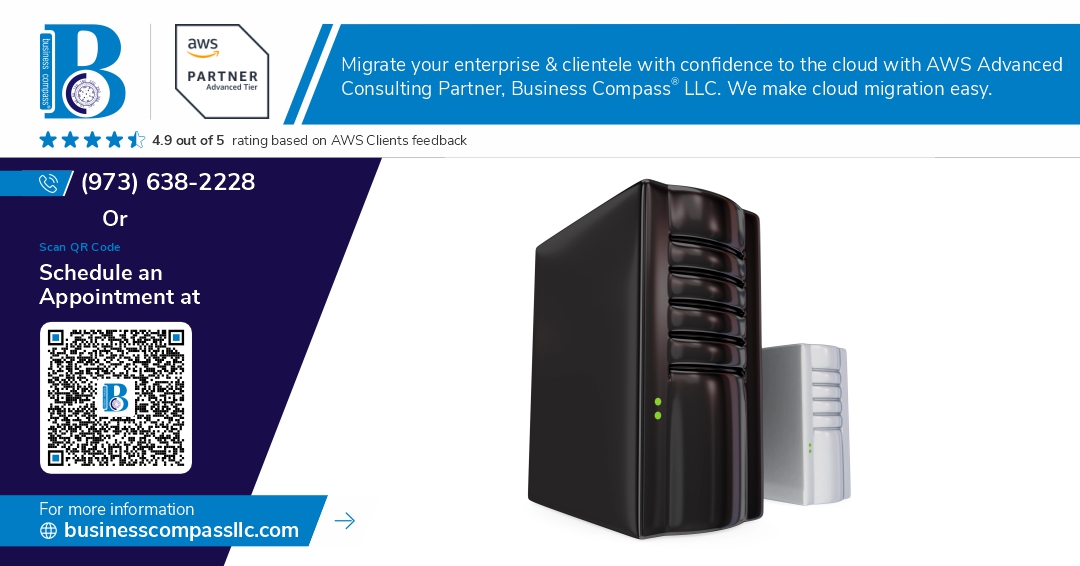Are you drowning in a sea of AWS storage options? 🌊 With so many choices like S3, EBS, EFS, FSx, and Glacier, it’s easy to feel overwhelmed. But fear not! Understanding these storage solutions is crucial for optimizing your cloud infrastructure and managing your data effectively.
Imagine having the power to choose the perfect storage solution for every project, effortlessly balancing performance, cost, and functionality. 💪 Whether you’re dealing with big data analytics, media streaming, or mission-critical applications, selecting the right AWS storage service can make or break your project’s success.
In this comprehensive guide, we’ll dive deep into the world of AWS storage and data management services. We’ll compare their performance, explore data management features, and analyze cost-effectiveness. Plus, we’ll examine how these services integrate with other AWS offerings, discuss real-world use cases, and reveal best practices for scalability, elasticity, and security. Get ready to become an AWS storage expert and revolutionize your cloud strategy! 🚀
Overview of AWS Storage Services
A. S3: Scalable object storage
Amazon S3 (Simple Storage Service) is a highly scalable object storage service designed for storing and retrieving any amount of data from anywhere on the web. It offers industry-leading durability, availability, and performance.
Key features of S3 include:
- Unlimited storage capacity
- 99.999999999% (11 9’s) of durability
- Multiple storage classes for cost optimization
- Built-in security and encryption
- Versioning and lifecycle management
| S3 Storage Class | Use Case | Availability | Retrieval Time |
|---|---|---|---|
| Standard | Frequently accessed data | 99.99% | Milliseconds |
| Intelligent-Tiering | Data with changing access patterns | 99.9% | Milliseconds |
| Glacier | Long-term archiving | 99.99% | Minutes to hours |
B. EBS: Block-level storage volumes
Amazon Elastic Block Store (EBS) provides persistent block-level storage volumes for use with EC2 instances. EBS is ideal for:
- Databases
- File systems
- Application testing and development
EBS offers different volume types to optimize performance:
- General Purpose SSD (gp2 and gp3)
- Provisioned IOPS SSD (io1 and io2)
- Throughput Optimized HDD (st1)
- Cold HDD (sc1)
C. EFS: Fully managed file storage
Amazon Elastic File System (EFS) is a fully managed, scalable file storage service for use with AWS Cloud services and on-premises resources. EFS is designed for:
- Big data and analytics
- Media processing workflows
- Content management systems
Comparing Storage Performance
I/O operations per second (IOPS)
When comparing storage performance across AWS services, IOPS is a crucial metric. Different storage options offer varying IOPS capabilities:
| Storage Service | IOPS Range | Best Use Case |
|---|---|---|
| EBS (gp3) | Up to 16,000 | General purpose workloads |
| EBS (io2) | Up to 64,000 | High-performance databases |
| EFS | Scales automatically | Shared file systems |
| S3 | N/A (object storage) | Large-scale data storage |
EBS volumes, particularly io2, excel in high IOPS scenarios, making them ideal for I/O-intensive applications. EFS automatically scales IOPS based on storage size, providing a balance between performance and ease of management.
Throughput capabilities
Throughput, measured in MB/s, varies significantly across AWS storage services:
- S3: Offers high aggregate throughput, ideal for concurrent access
- EBS: Provides up to 1,000 MB/s per volume
- EFS: Scales to over 10 GB/s for file systems
- FSx: Offers up to 3 GB/s of throughput
For high-throughput workloads, EFS and FSx are often preferred due to their ability to handle large amounts of data concurrently.
Latency considerations
Latency is critical for applications requiring quick data access:
- EBS: Lowest latency, typically single-digit milliseconds
- EFS: Low latency for file-based workloads
- S3: Higher latency but suitable for less time-sensitive operations
- Glacier: Highest latency, designed for archival storage
When selecting a storage solution, consider the latency requirements of your application. For low-latency needs, EBS and EFS are typically the best choices, while S3 and Glacier are more suitable for less time-sensitive operations.
Now that we’ve explored storage performance metrics, let’s delve into the data management features offered by these AWS services.
Data Management Features
A. Versioning and lifecycle policies
AWS storage services offer robust versioning and lifecycle management capabilities, ensuring efficient data management across various storage classes. S3, in particular, excels in this area:
- S3 Versioning: Keeps multiple variants of an object in the same bucket
- Lifecycle Policies: Automate transitions between storage classes
| Feature | S3 | EBS | EFS | FSx | Glacier |
|---|---|---|---|---|---|
| Versioning | Yes | Limited | No | No | No |
| Lifecycle Policies | Yes | No | No | Limited | Yes |
S3’s versioning allows easy rollback to previous versions, while lifecycle policies automate cost-effective data management by moving objects between storage tiers based on predefined rules.
B. Data replication and durability
AWS storage services provide high durability and replication options:
- S3: 99.999999999% durability with cross-region replication
- EBS: Replicated within an Availability Zone
- EFS: Replicates data across multiple AZs
- FSx: Offers high availability with multi-AZ deployment
- Glacier: 11 nines of durability with cross-region replication
C. Access control and encryption options
Security is paramount in AWS storage services, with various access control and encryption options:
- IAM policies and bucket policies for granular access control
- Server-side encryption (SSE) options:
- SSE-S3 (S3-managed keys)
- SSE-KMS (AWS Key Management Service)
- SSE-C (Customer-provided keys)
- Client-side encryption for additional security
These features ensure data protection at rest and in transit across all AWS storage services.
Now that we’ve explored the data management features of AWS storage services, let’s examine their cost-effectiveness in the next section.
Cost-Effectiveness Analysis
A. Pricing models for each service
AWS offers diverse pricing models for its storage services, catering to different usage patterns and budget requirements. Here’s a comparison of the pricing models:
| Service | Pricing Model | Key Features |
|---|---|---|
| S3 | Pay-per-use | Tiered pricing based on storage volume and requests |
| EBS | Fixed monthly | Per GB-month, with additional costs for IOPS and snapshots |
| EFS | Pay-per-use | Based on storage used, with no minimum fee |
| FSx | Fixed hourly | Charged per GB-month of storage capacity |
| Glacier | Pay-per-use | Low-cost archival storage with retrieval fees |
B. Storage tiers and cost optimization
AWS provides various storage tiers to help optimize costs based on data access patterns:
-
S3 Storage Classes:
- Standard (frequently accessed data)
- Intelligent-Tiering (unknown or changing access patterns)
- Standard-IA (infrequently accessed data)
- One Zone-IA (lower-cost option for infrequently accessed data)
- Glacier (long-term archival)
- Glacier Deep Archive (lowest-cost archival storage)
-
EBS Volume Types:
- General Purpose SSD (gp2, gp3)
- Provisioned IOPS SSD (io1, io2)
- Throughput Optimized HDD (st1)
- Cold HDD (sc1)
C. Total cost of ownership comparison
When comparing the total cost of ownership (TCO) across AWS storage services, consider:
- Direct costs: Storage fees, data transfer charges, and API requests
- Indirect costs: Management overhead, data lifecycle policies, and potential data recovery expenses
Now that we’ve analyzed the cost-effectiveness of AWS storage services, let’s explore how they integrate with other AWS offerings to create comprehensive data management solutions.
Integration with Other AWS Services
EC2 instance storage options
When it comes to integrating storage services with EC2 instances, AWS offers multiple options to suit various workload requirements:
| Storage Option | Use Case | Performance | Persistence |
|---|---|---|---|
| EBS volumes | Boot drives, databases | High IOPS | Persistent |
| Instance Store | Temporary storage, caching | Very high IOPS | Non-persistent |
| EFS | Shared file systems | Scalable performance | Persistent |
| S3 | Object storage, static assets | High throughput | Persistent |
- EBS volumes: Ideal for boot drives and databases requiring consistent I/O performance
- Instance Store: Perfect for temporary storage needs with extremely high I/O requirements
- EFS: Excellent for shared file systems across multiple EC2 instances
- S3: Great for storing and serving static assets or large datasets
Database backup and recovery solutions
AWS storage services seamlessly integrate with database systems to provide robust backup and recovery solutions:
- RDS automated backups using EBS snapshots
- DynamoDB backups to S3 for point-in-time recovery
- Redshift snapshots stored in S3 for disaster recovery
- Aurora backups leveraging S3 for continuous backup and fast restores
Big data and analytics platforms
AWS storage services play a crucial role in supporting big data and analytics workloads:
- S3 as a data lake for storing vast amounts of structured and unstructured data
- EMR utilizing EMRFS (EMR File System) backed by S3 for scalable data processing
- Redshift Spectrum querying data directly from S3 without loading
- Athena performing SQL queries on data stored in S3
Serverless computing compatibility
Storage services integrate seamlessly with serverless computing platforms:
- Lambda functions accessing S3 for event-driven processing
- Step Functions orchestrating workflows involving S3 and other storage services
- API Gateway serving static content from S3
- CloudFront caching and distributing content stored in S3
These integrations enable powerful serverless architectures, combining the scalability of storage services with the flexibility of serverless computing.
Use Cases and Best Practices
A. Web and mobile applications
When it comes to web and mobile applications, AWS storage services offer robust solutions to handle various data management needs. Here’s a breakdown of how different AWS storage services can be utilized:
| Service | Use Case |
|---|---|
| S3 | Static content hosting, media storage |
| EBS | Application server storage |
| EFS | Shared file storage for web servers |
| CloudFront | Content delivery and caching |
For web applications, S3 is ideal for storing and serving static assets like images, videos, and JavaScript files. Its high durability and scalability make it perfect for handling large volumes of user-generated content. EBS, on the other hand, is best suited for storing application data that requires frequent read/write operations.
Mobile applications can leverage S3 for storing user data, while using Amazon DynamoDB for real-time data synchronization across devices.
B. Enterprise file sharing
Enterprise file sharing requires secure, scalable, and easily accessible storage solutions. AWS offers several services that cater to these needs:
- Amazon EFS: Ideal for shared file systems across multiple EC2 instances
- Amazon FSx: Provides fully managed file systems for Windows and Lustre
- Amazon WorkDocs: Secure content creation, storage, and collaboration service
These services enable organizations to:
- Centralize file storage
- Implement version control
- Enforce access permissions
- Facilitate team collaboration
C. Data lakes and big data processing
AWS storage services play a crucial role in building and managing data lakes for big data processing:
- S3 as the foundation: Store vast amounts of structured and unstructured data
- Athena for querying: Run SQL queries directly on S3 data
- Glue for ETL: Prepare and load data for analytics
- EMR for processing: Run big data frameworks like Hadoop and Spark
This combination allows organizations to:
- Centralize data from various sources
- Perform advanced analytics
- Derive meaningful insights from large datasets
D. Backup and disaster recovery strategies
Implementing robust backup and disaster recovery strategies is crucial for business continuity. AWS storage services offer several options:
| Service | Backup Use Case |
|---|---|
| S3 | Long-term data archiving |
| Glacier | Cold storage for infrequently accessed data |
| EBS Snapshots | Point-in-time backups of EC2 instances |
| AWS Backup | Centralized backup management across AWS services |
Best practices for backup and disaster recovery include:
- Regular automated backups
- Cross-region replication for critical data
- Implementing a tiered storage strategy
- Testing recovery procedures periodically
By leveraging these AWS storage services and following best practices, organizations can ensure data resilience and quick recovery in case of unforeseen events.
Scalability and Elasticity
Automatic scaling capabilities
AWS storage services offer impressive automatic scaling capabilities, ensuring your data management needs are met as your business grows. Let’s explore how each service handles scaling:
| Service | Automatic Scaling Capability |
|---|---|
| S3 | Unlimited scaling without provisioning |
| EBS | Elastic volumes can be resized on-the-fly |
| EFS | Automatically scales as data is added or removed |
| FSx | Scales automatically based on workload demands |
| Glacier | Scales infinitely for archival storage |
S3 leads the pack with its ability to scale infinitely without any provisioning required. This makes it ideal for applications with unpredictable storage needs. EFS follows closely, automatically scaling as you add or remove data, making it perfect for shared file systems in dynamic environments.
Storage capacity limits
While AWS storage services are designed to be highly scalable, some do have capacity limits to consider:
- S3: No practical limit on total storage
- EBS: Up to 16 TiB per volume
- EFS: Petabyte-scale capacity
- FSx: Varies by file system type (e.g., Windows up to 65,536 GiB)
- Glacier: No practical limit on total storage
Performance scaling options
Performance scaling is crucial for maintaining optimal data access speeds as your storage needs grow. Here’s how each service handles performance scaling:
-
S3:
- Scales to handle high request rates
- Parallel access for improved performance
-
EBS:
- Provision IOPS for consistent performance
- Burst capacity for occasional high-performance needs
-
EFS:
- Bursting and provisioned throughput modes
- Automatically scales performance with storage size
-
FSx:
- Adjustable throughput capacity
- SSD storage options for high-performance workloads
-
Glacier:
- Various retrieval options to balance performance and cost
Now that we’ve explored the scalability and elasticity of AWS storage services, let’s move on to security and compliance considerations.
Security and Compliance
Data encryption at rest and in transit
AWS storage services offer robust encryption mechanisms to protect your data both at rest and in transit. Here’s a comparison of encryption features across different services:
| Service | Encryption at Rest | Encryption in Transit |
|---|---|---|
| S3 | Server-side (SSE) | TLS/SSL |
| EBS | AES-256 | TLS/SSL |
| EFS | AES-256 | TLS |
| FSx | AES-256 | TLS |
| Glacier | AES-256 | TLS/SSL |
S3 offers additional client-side encryption options, giving you more control over your encryption keys.
Identity and access management (IAM)
AWS IAM integrates seamlessly with storage services, allowing fine-grained access control:
- Resource-based policies
- User-based policies
- Role-based access control
- Multi-factor authentication (MFA)
Compliance certifications
AWS storage services adhere to various compliance standards, including:
- HIPAA
- PCI DSS
- SOC 1, 2, and 3
- ISO 27001
- GDPR
Auditing and monitoring tools
To ensure security and compliance, AWS provides powerful auditing and monitoring tools:
- AWS CloudTrail: Logs API calls and account activity
- Amazon CloudWatch: Monitors resources and applications
- AWS Config: Assesses, audits, and evaluates configurations
These tools work in conjunction with storage services to provide comprehensive security oversight and compliance management. With these features, AWS storage solutions offer a secure and compliant environment for your data management needs.
AWS offers a comprehensive suite of storage and data management services, each tailored to specific needs and use cases. From high-performance block storage with EBS to cost-effective archival solutions like Glacier, these services provide flexibility and scalability for diverse workloads. The integration capabilities with other AWS services enhance their value, enabling seamless data workflows and advanced analytics.
When choosing the right storage solution, consider factors such as performance requirements, data access patterns, cost-effectiveness, and compliance needs. By leveraging the strengths of each service and following best practices, organizations can build robust, secure, and efficient data management architectures in the cloud. Ultimately, AWS’s storage portfolio empowers businesses to focus on innovation and growth while leaving the complexities of data storage and management to the experts.



















